Honestly, I never thought that tossing on some plain white clothes and a green scarf would make me feel like I belonged to something so huge. San Lorenzo in Huesca is a festival where the whole city comes alive for nine days, and the streets burst with music, dancing, and tradition. Everywhere I glanced, people—kids and grandparents alike—wore the same outfit, and their smiles and excitement just kept spreading under the hot August sun.
As I wandered through Huesca, parades, folk dances, and local customs swept me up. Each day, something new grabbed my attention, from wild concert stages to the rush of the “vaquillas,” where everyone cheered and laughed together. The energy was just infectious, and I realized pretty quickly that in Huesca, nobody stays a stranger for long.
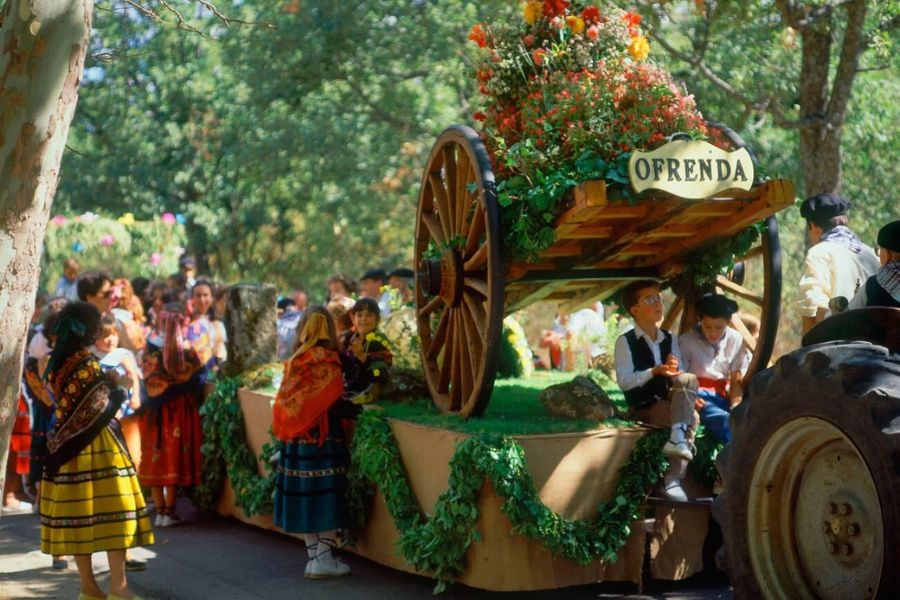
I dove into the food, tried out the dances, and slowly uncovered the meaning behind the green and white. All that made me feel like I’d found a second home. This festival isn’t just about having a blast—it’s about connecting, making memories, and getting to the heart of Spanish tradition.
Discovering the San Lorenzo Fiesta Spirit
San Lorenzo in Huesca mixes deep traditions, local pride, and some seriously eye-catching celebrations. From historical origins and colorful rituals to the city’s role in Spanish festivities, every detail helps you soak up the fiesta’s spirit.
Origins and Traditions of San Lorenzo
During San Lorenzo, I noticed almost everyone in Huesca wears white, with a green scarf as a bold accent. It’s not just for looks—this outfit honors San Lorenzo, the city’s patron saint, every August. The festival runs for nine days, and the city buzzes with daily events.
I saw processions, religious ceremonies, folk dances, and the “vaquillas” bull runs. Kids and adults jump in, keeping these traditions alive year after year. Families hand down their white clothes and green scarves, which really shows how much these customs mean.

At the festival’s core, I found music, the smell of basil, and shared meals in the main plazas. Every gathering honors the past but keeps things open and joyful.
The Role of Huesca in Spanish Festivities
Huesca might not be Spain’s biggest city, but its festivals pack a punch. In Aragon, where Huesca sits, San Lorenzo stands out as one of the top annual events. During the fiestas, people flood in from nearby villages and all over Spain.
Locals see this festival as a highlight, but they welcome newcomers with open arms. When I tied on my green scarf, I felt like I belonged right away. Shops close up, and the streets just fill with music, dancing, and laughter.
Huesca’s spot in northern Spain makes it easy for travelers from Castile and beyond to join the fun. The city’s warmth and lively spirit make it a must for anyone wanting to dive into Spanish culture.
Cultural Geography and Historical Roots
Huesca sits at the base of the Pyrenees, shaped by centuries of Christian and Muslim influence. You can see this mix in the buildings, the food, and even the festival traditions.
San Lorenzo’s roots stretch back to early Christian Spain, tying local celebrations to the bigger Spanish story. Historians point out how Huesca’s traditions survived all sorts of changes through the Middle Ages, with every era leaving its mark.
I picked up on echoes of the region’s culture in the folk music and food. Even the festival’s processions, which snake through old medieval streets, show off Huesca’s layered history. This blend of culture and geography gives the San Lorenzo festival a vibe that feels both ancient and totally alive.
Green & White: Symbolism and Celebration
When August rolls around in Huesca, green and white just take over. These colors aren’t just for show—they’re everywhere, from clothes to decorations, and even in how people greet each other.
The Meaning Behind the Colors
Green and white mean a lot during San Lorenzo. Green stands for basil, which is a big festival symbol and a sign of fresh life and protection. Locals even have proverbs about basil, reminding everyone to keep their spirits up.
White brings everyone together. It stands for unity and peace, and it puts everyone—families, travelers—on the same level. Some Spanish poets, clearly inspired by these festivals, wrote about green and white as symbols of romance, youth, or hope. The mix of these colors creates a background that just feels joyful, whether you’re squeezed into a plaza or watching a sunrise parade.
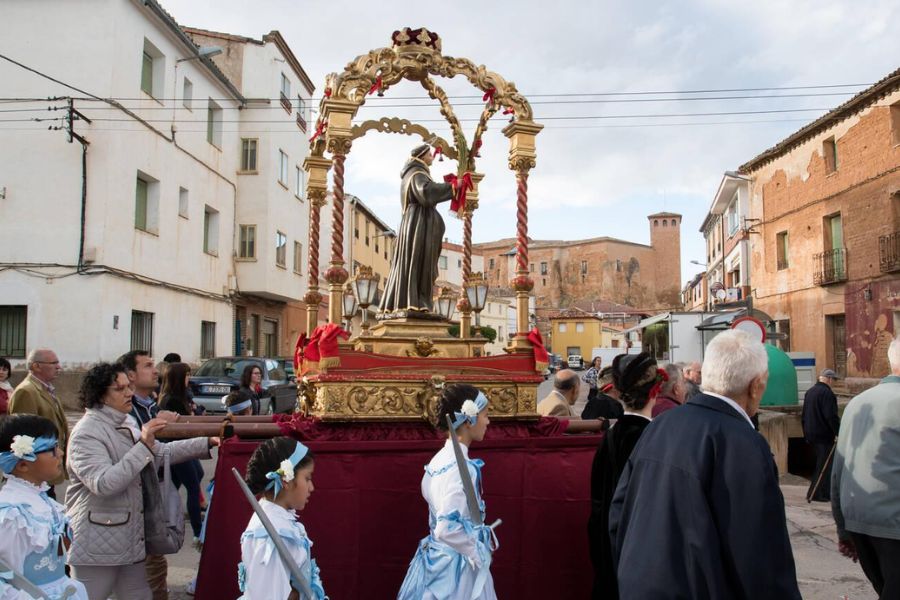
Traditional Attire and Festival Accessories
During the festival, everyone rocks white shirts, pants, or dresses, and ties a bright green scarf—the “pañuelo”—around their neck. When the crowds move together, there’s this sea of green and white that’s just electric. The smell of basil, pinned to shirts or carried in bouquets, floats everywhere.
Locals, and even visitors like me, spend real time picking out the perfect scarf and accessories. Some people add pins or charms, hand-me-downs from relatives. Shops in Huesca sell festival kits with scarves, sashes, and even little bottles of cologne, so it’s easy to jump in. These color choices aren’t a passing trend—they’re a tradition that connects generations.
Community Participation and Support
San Lorenzo thrives because everyone pitches in. All ages get involved, from little kids skipping along to older neighbors swapping stories. People trade scarves, share proverbs, or recite lines from old Spanish romances as a way to break the ice.
Families and businesses deck out balconies and shop windows with green and white banners. Local clubs and volunteers organize parades or run food stalls. I saw that the festival runs on more than just cash—people give their time and energy to make everyone feel included. Honestly, it’s hard not to get swept up. Even shy newcomers find themselves right at home.
Live Music, Dance, and Performing Arts
Music and dance seem to fill every corner of Huesca during San Lorenzo. Every street buzzes with bands, local musicians, and dancers pulling people into the fun.
Fiesta Soundtrack: Brass Bands and Ensembles
The heart of the fiesta beats in the sounds of brass bands and music groups. Whenever I step outside, I catch trumpets, saxophones, and tubas floating through the summer air. Musicians of all ages, from students to pros, team up to keep the party going.
Piccolos, flutes, and clarinets add their own bright touch, threading melodies through the crowd. Sometimes a jazz group pops up with a swing tune, or a trombone band marches by. There’s even a group led by conductors who mix old songs with playful, experimental music.
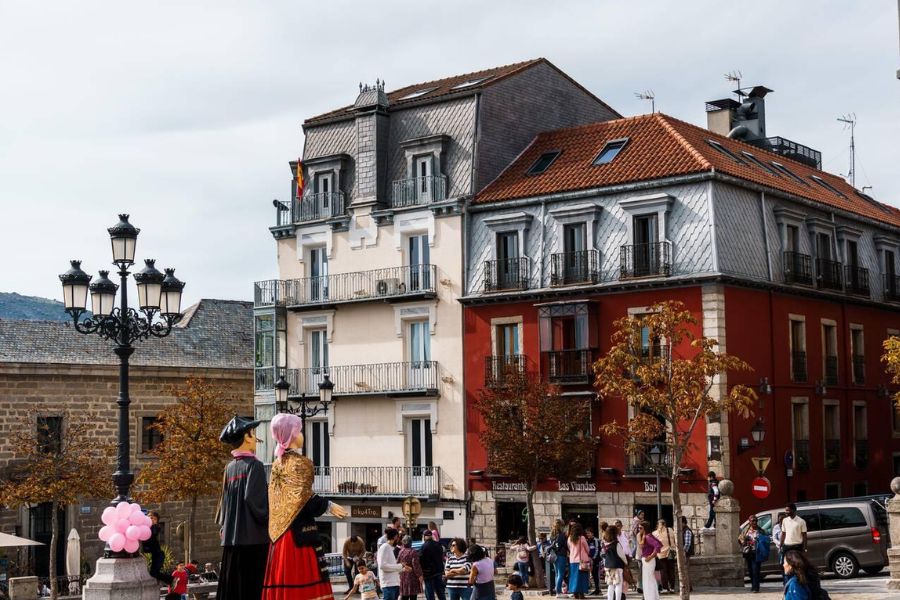
Violinists and bagpipe players set up in the city center, each adding their own style to the mix. When a folk ensemble plays, the mood shifts—people start clapping and humming along before wandering off to the next act.
The Rhythms of Traditional and Modern Dance
Dance is at the core of San Lorenzo. The “Danzantes” (dancers) steal the show every August 10th, pulling off routines with swords, sticks, and ribbons in ways that tell stories from long ago.
As the music goes from folk to modern, I see dance groups sharing the plaza with flamenco troupes and hip-hop kids. Some wear the festival’s green and white, spinning and stomping along with jazz bands or DJs. It’s not rare to see teens teaching older folks the latest moves, or just making up new steps together in the street.
Watching these performances up close, I realized dance isn’t just art here—it’s the city’s heartbeat. Every move seems to invite the crowd to join in or just smile and watch.
Marching Through the Streets with Joy
Parades snake through the city like rivers, led by bands and dancers who can barely hide their excitement. Early in the morning, I hear the drums and trumpets before I even see the parade. Musicians and performers, with recorders and flutes, march in loose formation, keeping things relaxed and fun.
I follow along as the parade winds through Huesca’s narrow streets. Kids wave at trombonists, and the crowd cheers for dancers spinning at every stop. Sometimes violinists and bagpipe players take the lead for a stretch.
Street marches make the performing arts feel close and personal. There’s no wall between performers and the public—anyone can join in, clap, or shake a tambourine along the way. For me, the best part is how everyone, no matter where they’re from, comes together in this wild, happy energy.
Personal Encounters and Memorable Moments
In my white and green, I dove straight into the San Lorenzo festivities with a mix of nerves and excitement. The days blurred together in a rush of local voices, laughter, and a sense of community that really stuck with me.
My First Steps in the Parade
Right from the start, the city’s energy hit me. I remember falling into step as the music kicked in. Drums bounced off the walls, and dancers and musicians smiled, making space for newcomers.
Improvisation ruled the parade. People from the crowd would jump in, or an older dancer would step up to guide us with a nod.
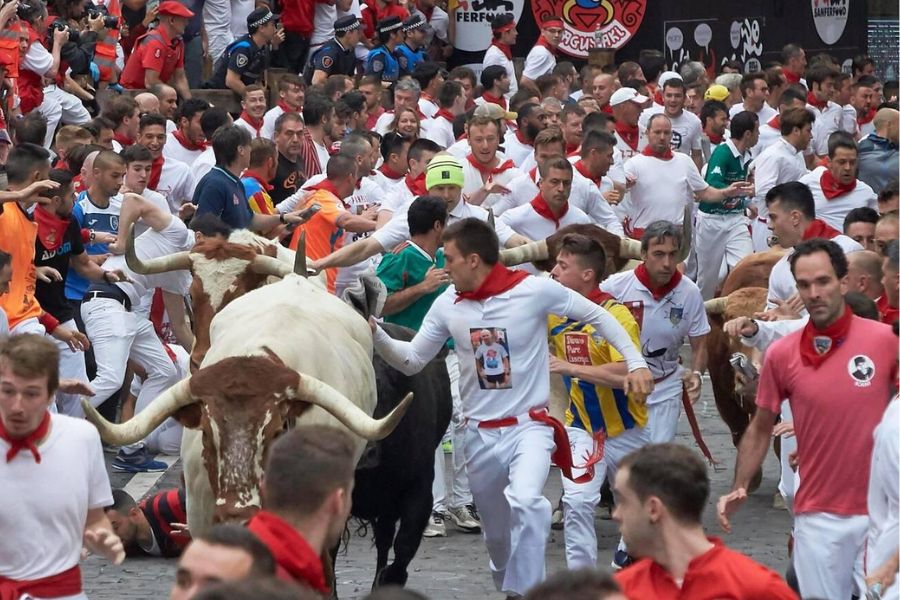
A local mentor—a grandmother with a perfectly tied green scarf—showed me how to swing my kerchief and keep up with the steps. Her kindness made it easier to follow along, even when I lost the rhythm. Every block, folks on balconies cheered, making me feel like I truly belonged.
Unforgettable Flavors and Street Food
San Lorenzo in Huesca is about taste as much as tradition. After all that dancing, I found myself drifting toward food stalls, lured by the smells of sizzling pans and sweet treats. Paella pans hissed, tortillas got sliced thick, and churros dusted with sugar drew hungry crowds.
My favorite snack? Empanadas stuffed with spinach and pine nuts. At one stall, a vendor talked me into trying migas, fried bread crumbs with chorizo and peppers.
I squeezed in at a small table, and everyone shared bites, swapping stories and laughing between mouthfuls. These little moments turned strangers into friends. Somewhere nearby, a folk singer’s voice floated over, adding music even to the quieter breaks.
Meaningful Connections with Locals
During the festival, people really reach out. Locals guided me when I got lost, often acting as patient mentors and sharing stories.
One afternoon, a family invited me into their home to see their San Lorenzo decorations and escape the sun for a while. They spoke with warmth about why the celebration matters—supporting neighbors and keeping traditions alive.
Even brief interactions left a mark. Every chat gave me something new—how improvisation keeps the festival fresh, or how every voice adds color to the experience. These moments built a sense of belonging, turning me from a visitor into a welcomed guest.
Exploring Huesca and Its Enchanting Surroundings
Huesca buzzes during San Lorenzo, but the city is also a gateway to a patchwork of history, culture, and landscapes. From medieval castles to echoes of Arabic and Catalan heritage, every walk outside the festival opens up a new adventure.
Landmarks and Hidden Gems Beyond the Fiesta
When I slipped away from the green and white crowds, Loarre Castle instantly grabbed my attention. Its stone towers rise against the sky, telling stories of Spanish Arabs and Saracen defenders from long ago.
Inside, arches and courtyards hint at both Cordova’s influence and local legends. I could almost hear the old whispers as I wandered through.
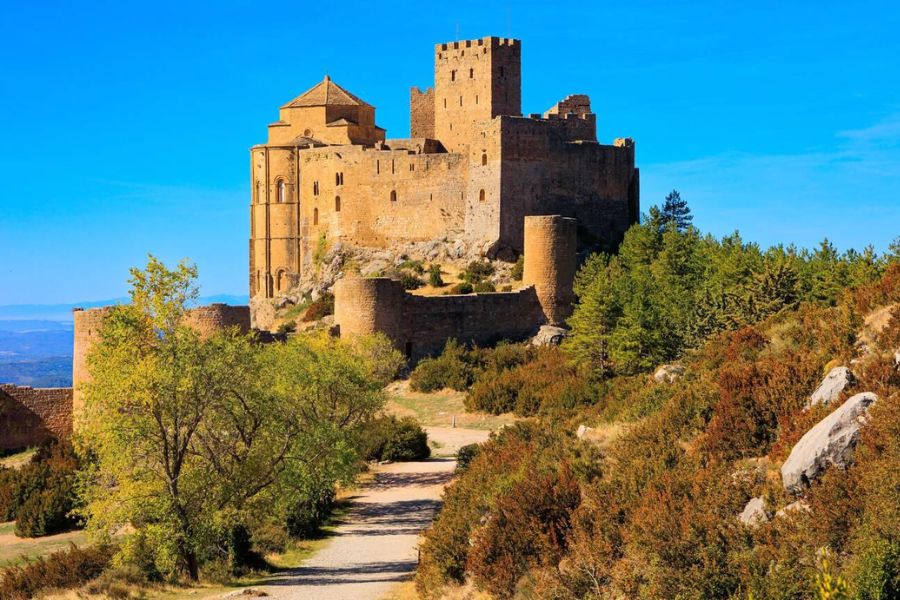
I wandered narrow streets lined with Romanesque churches and tucked-away cafés. Locals sometimes share stories about Provençal and Limousin travelers who passed through before me.
Even the quiet plazas seem to hold layers of medieval history. There’s something about the atmosphere that just feels ancient.
Ordesa y Monte Perdido National Park sits close by, practically calling out to anyone who loves wild scenery. The park’s trails twist through forests and climb up rocky slopes.
It’s a perfect escape if you want a break from the city’s bustle. I can’t help but recommend it to anyone craving a bit of nature.
Day Trips to Castile, Granada, and Asturias
On day trips, I found Castile’s golden fields stretching out under the sun. Old villages here tell stories about Spanish unity, if you listen closely.
In Granada, the famous Alhambra really left a mark on me. Its delicate Islamic art and echoes of Arabic poetry felt unforgettable.
Asturias brought me to the green north, where foggy hills roll down to peaceful beaches and small villages. Each village has its own food and unique traditions.
If you love the outdoors, I’d suggest checking out Cangas de Onís or hiking in the Picos de Europa. Honestly, the scenery just doesn’t get old.
Huesca draws you in with its lively festival, but these side trips to Castile, Granada, and Asturias show just how much variety Spain holds. I didn’t expect to find so much—from Arabic heritage in grand palaces to a hint of Celtic spirit in northern music.
Cultural Blends: Catalan, Arabic, and Provençal Influences
As I wandered the streets of Huesca, I kept noticing how both Catalan and Provençal designs shaped the buildings and roads. You can really see the mix—past invasions and migrations left their mark, especially in the arches and the way the stone fits together.
When festival nights rolled around, I’d catch music drifting through the air, and those Arabic notes would sneak into the traditional Spanish songs. It’s almost like stories from old Arabic literature come alive in the marketplace.
Sometimes, you’ll hear words from Cordova or lines from Saracen poets if you chat with local historians or artists. The city feels like it’s always echoing those voices.
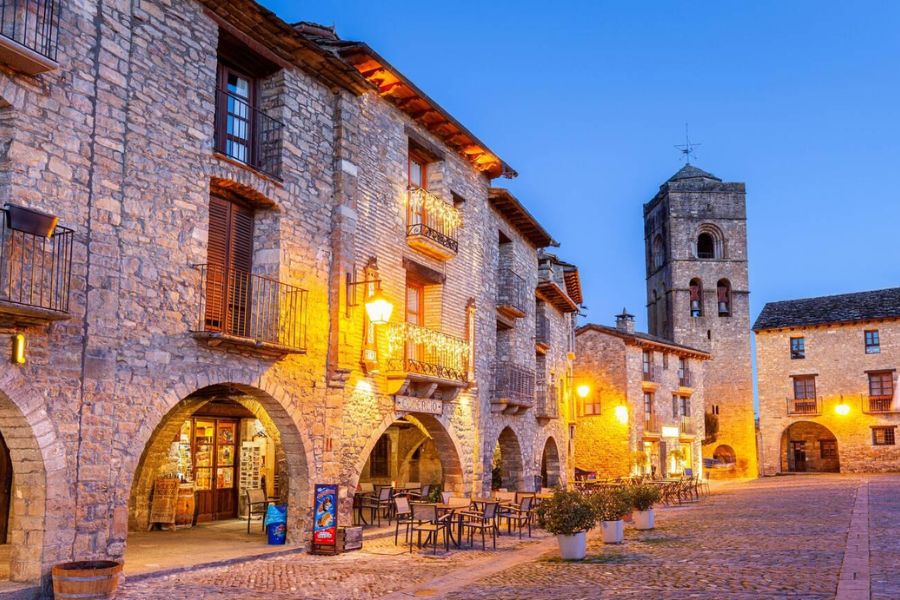
Shops spill out treats and crafts from all over the region. That’s a nod to the Provençal merchants and Catalan neighbors who’ve helped shape daily life here.
Every little thing—the festival dances, or those quirky bits of architecture—feels like a puzzle piece. Huesca, in its own way, connects to a much bigger story than just what you see inside the city walls.

